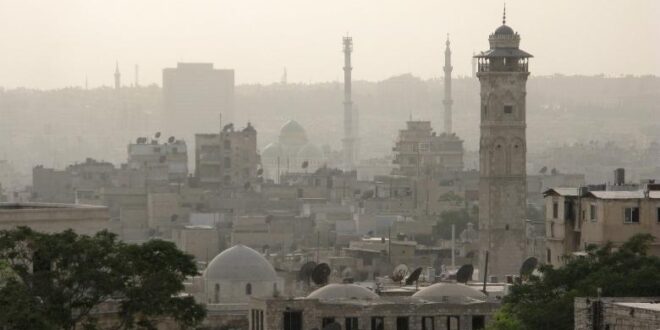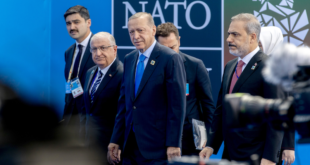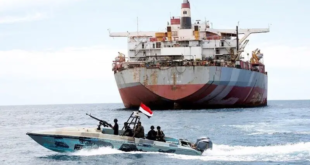The attack launched by ISIS on 20 January 2022 against the Al-Sina’a Prison in Al-Hasakah, an area situated in North-Eastern Syria and currently under the authority of the Kurdish-led Syrian Democratic Forces, with the intention of freeing ISIS fighters held there, once again demonstrated the importance of adequately addressing the situation of the foreign fighters still being held in camps in Syria (and Iraq).
In a meeting of the UN Security Council on 27 January 2022, the UN Under-Secretary-General for Counter-terrorism underlined “the need to bring them to justice as soon as possible, and ensure accountability.” In the ensuing debate, many members of the UN Security Council were supportive of his subsequent call “to speed up the repatriation of Foreign Fighters and advance the wheels of justice.” Human rights organizations, such as the Human Rights Watch, have also reiterated the need for “all countries with nationals detained in northeast Syria [to] repatriate or help bring home their nationals for rehabilitation, reintegration, and as appropriate, prosecution.” In my recent article for the International Review of the Red Cross, I also argue that it is of utmost importance for these foreign fighters to be brought to justice, preferably in their country of origin.
This post is mainly concerned with the foreign fighters referred to above—i.e., those who have joined groups that could qualify both as a non-State armed group involved in a non-international armed conflict and as a terrorist organization. It is in such instances that the relationship between counterterrorism (CT) legislation and international humanitarian law (IHL), and its impact on prosecution, is the most pressing. Given that the question of foreign fighters and their regulation has also been brought up in the context of the ongoing war in Ukraine, this post shall also briefly comment on that.
The Complex Nature of Contemporary Foreign Fighters
Agreeing to the definition as proposed by Sandra Krähenmann, foreign fighters are “individual[s] who [leave] [their] country of origin or habitual residence to join a non-state armed group in an armed conflict abroad and who [are] primarily motivated by ideology, religion, and/or kinship.” Given that these individuals join non-state armed groups involved in armed conflict, IHL per definition becomes relevant when assessing their conduct.
Most contemporary foreign fighters join what I would qualify as dual nature groups, i.e., groups that can at the same time be qualified as a non-State armed group involved in a non-international armed conflict as well as a terrorist organization. Jihadist groups involved in the conflict in Syria, such as ISIS and Jabhat Al-Nusra, provide good examples of such groups—CT legislation and IHL may be of relevance when assessing the conduct of members of these jihadist groups.
The conduct of contemporary foreign fighters, therefore, is situated between CT and IHL. Whereas there is increased consideration for the relevance of IHL when dealing with foreign fighters, the counterterrorism perspective remains dominant. The use of terms such a “Foreign Terrorist fighters“ seems to blur this dual nature in favor of a CT approach, which may impact prosecution. CT-related offences have indeed been central to most prosecutions of foreign fighters that have taken place so far. In its most extreme form, a CT dominant approach may lead to the consideration of all foreign fighters as terrorists.
The phenomenon of foreign fighters is not new, but what is new is the high number of foreign fighters that were drawn to the conflict in Syria. Although most of these fighters joined groups the international community earmarked as terrorist entities, not all foreign fighters should be considered foreign terrorist fighters. A foreign fighter who joins a non-State armed group should not necessarily fall under the CT framework.
Foreign Fighters in Ukraine
The question of foreign fighters has also become an issue in the Ukraine conflict. As the Soufan Center has pointed out in a recent report, “The battlefield in Ukraine is incredibly complex, with a range of violent non-state actors—private military contractors, foreign fighters, volunteers, mercenaries, extremists, and terrorist groups—all in the mix ….” Indeed, in addition to the international armed conflict between Ukraine and Russia, there is also an ongoing non-international armed conflict on the territory of Ukraine between the official armed forces and members of the self-proclaimed “People’s Republics” of Donetsk and Luhansk. Russia furthermore also still occupies Crimea.
To adequately assess the status of the foreigners who joined Ukraine in its fight against Russia it is important to understand the nature of the groups they joined. The two terms most commonly used to describe these foreigners have been “foreign fighter” and “mercenary.” Russia has preferred the term “mercenary” because this characterization would relieve Russia, in accordance with Article 47(1) of the 1977 First Additional Protocol (API) to the Geneva Conventions, of the obligation to grant those foreigners Prisoner of War (POW) status upon capture. Both concepts, however, do not accurately reflect the nature of these fighters.
As discussed above, foreign fighters are individuals who leave their country of origin to join a non-State armed group involved in an armed conflict abroad. Because the International Legion for the Defense of Ukraine is officially linked to Ukraine’s armed forces, the term “foreign fighter” to describe its members would not be adequate. A mercenary, on the other hand, is defined in Article 47(2) of API as a person who:
(a) is specially recruited locally or abroad in order to fight in an armed conflict;
(b) does, in fact, take a direct part in the hostilities;
(c) is motivated to take part in the hostilities essentially by the desire for private gain and, in fact, is promised, by or on behalf of a Party to the conflict, material compensation substantially in excess of that promised or paid to combatants of similar ranks and functions in the armed forces of that Party;
(d) is neither a national of a Party to the conflict nor a resident of territory controlled by a Party to the conflict;
(e) is not a member of the armed forces of a Party to the conflict; and
(f) has not been sent by a State which is not a Party to the conflict on official duty as a member of its armed forces.
The six conditions contained in Article 47(2) are cumulative, and hence the definition is rather restrictive and difficult to meet. The desire for private gain has been highlighted as the distinctive feature of the status of mercenary. This criterion does not seem applicable to members of Ukraine’s international legion (or at least not all of them), and in any case this motivation would be difficult to prove.
Given the absence of an accurate term to describe the foreigners fighting in Ukraine, some have been referring to them as “Foreign Volunteers.” This is merely a descriptive term and not a legal concept in and out of itself. It is important to note that IHL would apply in any case to all those directly participating in an armed conflict. The legal characterization would matter in terms of, among other things, combatant immunity, i.e., the immunity from domestic prosecution for mere participation in hostilities, usually only granted to combatants belonging to State armed forces. The main question here is whether these “foreign volunteers” could be considered to be a part of the Ukrainian State armed forces in order to qualify for combatant immunity. (See also here and here.)
Cumulative Prosecution
With regard to foreign fighters who join dual nature groups, in my opinion, it is crucial for those foreign fighters to be prosecuted in a system that duly recognizes their complex nature and takes all relevant legal frameworks into account. Hence, I would advocate for cumulative prosecution, i.e., prosecution for both CT related offences and war crimes, in cases where dual prosecution would be appropriate and possible. Note that although the focus of this post is on the relationship between CT and IHL, cumulative prosecution may also be relevant in the context of the prosecution of foreign fighters in relation to the other core international crimes such as genocide and crimes against humanity.
An approach focused on the acts that have actually been committed, rather than on membership in a terrorist organization, should result in more appropriate sentences and more adequate justice for the victims. As such, it would also provide the best way to ensure actual accountability. I do acknowledge that establishing membership in a terrorist organization is often easier to prove than actual acts, such as the commission of war crimes abroad during an ongoing armed conflict. An increasing number of tools, however, are available to assist (national) judges in collecting evidence of alleged criminal conduct in areas beyond their jurisdiction. For example, the use of open-source intelligence, including information from the internet and social media in particular, can play an important role in such cases.
Early examples of cumulative prosecution addressed the war crime of outrages upon personal dignity. In these cases, photographic or video evidence (often shared on social media) was used to prove that protected persons had been treated in a gravely humiliating or degrading manner amounting to war crime. Similarly, agencies such as UNITAD (UN Investigative Team to Promote Accountability for Crimes Committed by Da’esh) and NGOs such as the Commission for International Justice and Accountability (CIJA) can assist national authorities in collecting evidence.
Ensuring Effective Prosecution?
There are numerous allegations that foreign fighters committed serious wrongful acts in the context of the Syrian war. A variety of potential prosecution options that give due regard to the different legal frameworks could be used to hold them accountable. For a more in-depth assessment of these options, please see my recent article.
First, international criminal justice, besides being rather complicated (if not impossible) to activate given that Syria is not a party to the ICC statute, is focused on the core international crimes (war crimes, crimes against humanity, and genocide). Because there is no specific international crime of terrorism—though some specific acts of terrorism could potentially be prosecuted under one of the core crimes—prosecuting terrorism at an international criminal tribunal would be a challenge.
One way CT considerations could potentially be taken into consideration at an international tribunal would be if the UN Security Council set up an ad hoc tribunal competent to try CT-related offences. This approach, however, is unlikely to be feasible. Any UN Security Council resolution to establish such an ad hoc tribunal would likely be blocked given the close relationship between Russia, a permanent member of the UN Security Council, and Syria. Additionally, the question of exactly what conduct could be prosecuted under the CT framework would have to be resolved. The international CT framework mainly requires States to transpose crimes specified in CT conventions into their domestic criminal laws.
Second, national prosecutions in the region have also revealed some important flaws. Both Syria and Iraq have the competence to prosecute foreign fighters in their custody on the basis of the territoriality principle, i.e., the fact that the alleged crimes were perpetrated on their territory. However, the prosecution of foreign fighters in Iraq has been based on overly broad national terrorist laws which have led to the application of a one-size-fits all approach. These prosecutions generally fail to account for the role actually played by the suspect.
National prosecutions, such as those in Iraq, raise serious concerns about due process rights, but reliance on them also means other crimes, such as war crimes, are not being properly investigated. In the absence of the transposition of core international crimes into national criminal legislation, Iraqi national courts simply cannot prosecute these crimes.
The prosecution of foreign fighters in the custody of the Syrian Democratic Forces, a non-State armed group, raises another legal issue. It is unclear whether non-State armed groups have the competence to prosecute foreign fighters. According to the ICRC, “[a]lthough the establishment of such courts may raise issues of legitimacy, trial by such means may constitute an alternative to summary justice and a way for armed groups to maintain ‘law and order’ and to ensure respect for humanitarian law.” However, even if non-State armed groups could prosecute foreign fighters in their custody, by their design these courts would probably be limited to the adjudication of IHL violations.
Finally, foreign fighters can also be prosecuted in their country of origin based on the active personality principle—in other words, on the basis of the nationality of the potential perpetrator of a crime. These prosecutions offer some good prospects for cumulative prosecution, at least with respect to EU countries of origin, which are the basis of my current research. Cumulative prosecution in EU countries of origin are possible because both terrorist-related offences and core international crimes are incorporated into their national legislation. In other countries of origin where CT-related offences and international crimes have been incorporated into the national criminal code, these types of prosecutions could also be appropriate.
Concluding Remarks
To ensure adequate accountability of foreign fighters, it is important for them to be prosecuted in a system that recognizes their complex nature and has the capacity to take into account all relevant legal frameworks. Most returning foreign fighters are still prosecuted for terrorist-related offences, though the number of cumulative prosecutions for both war crimes and terrorist-related offences has increased in countries of origin, particularly Germany and the Netherlands. The national prosecution of foreign fighters in their country of origin seems to offer the best prospects for cumulative prosecution. However, the first crucial step to ensuring accountability is active repatriation of these fighters. Leaving them in camps abroad, without any prospects of them bringing them to justice, would fail to meet the demands of justice and accountability.
 Eurasia Press & News
Eurasia Press & News




